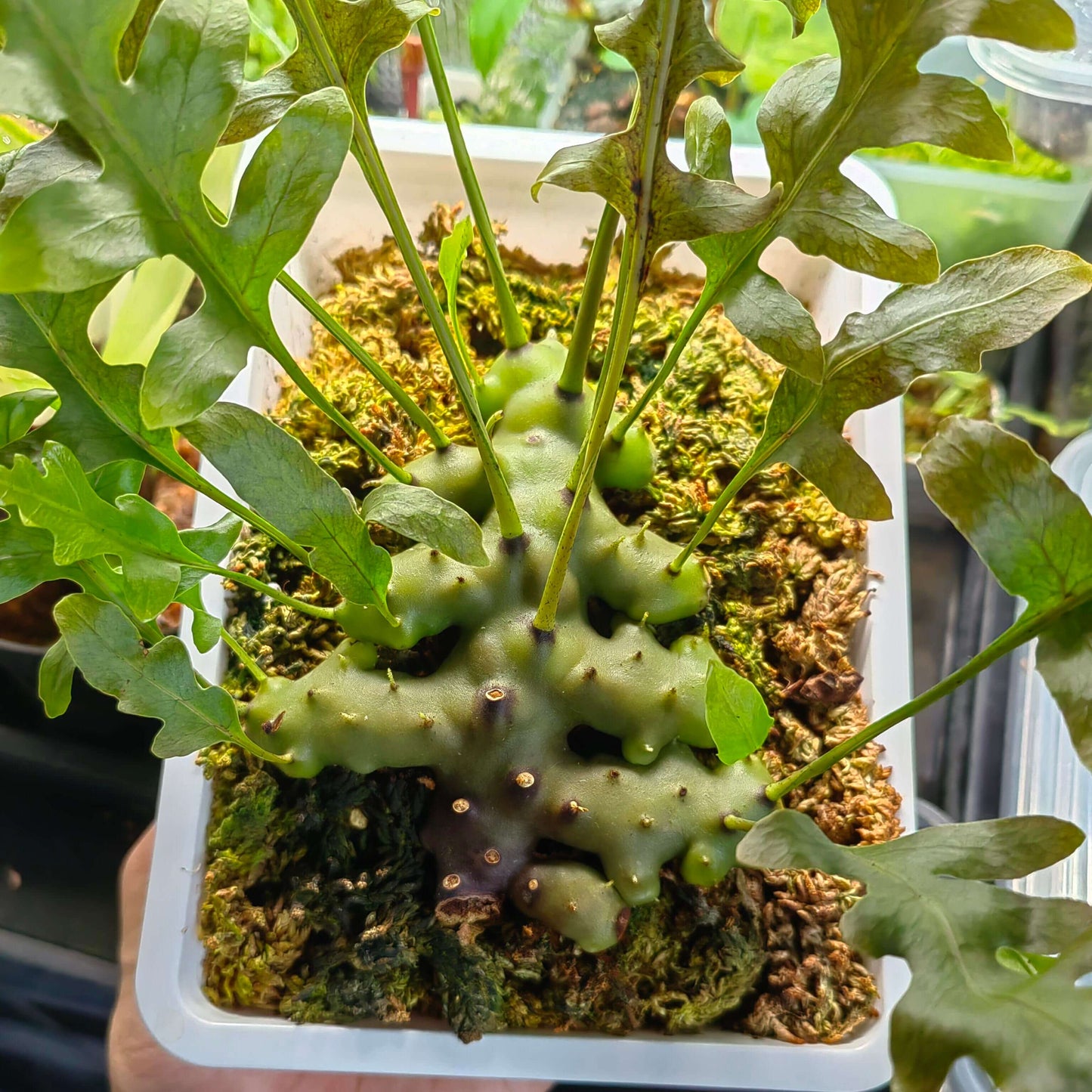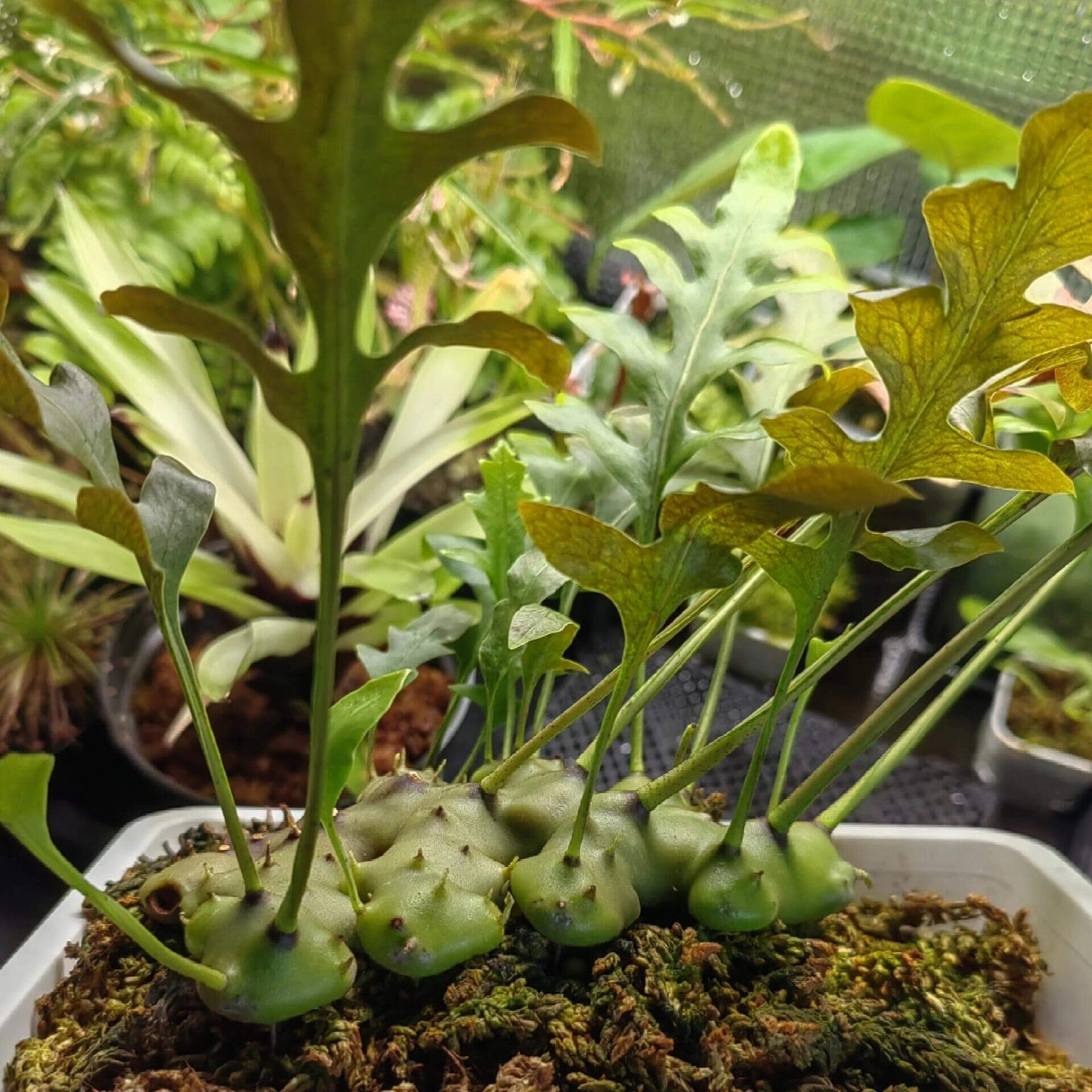Begin With Plants
Lecanopteris carnosa 'Ant Fern'
Lecanopteris carnosa 'Ant Fern'
Couldn't load pickup availability
Lecanopteris carnosa is a tropical epiphytic fern found in regions including Borneo, Malaysia, the Philippines, Sumatra, and Sulawesi. It features thick, fleshy rhizomes—up to around 15 cm across—that develop hollow cavities used as nesting sites by ants, classifying it as a myrmecophyte and also often described as succulent-like.
These rhizomes can form dense clusters up to ~50 cm wide, supporting fronds that may reach 25 cm in length. The creeping, branched rhizomes are often covered with glandular hairs or coralloid outgrowths, and the fronds are deeply pinnatifid (lobed), sometimes reaching 30–90 cm long.
Features:
-
Natural Habitat: Epiphytic in tropical forests with varying sunlight—from shaded understories to more open forest areas.
-
Symbiosis with Ants: The fern’s rhizomes provide shelter for ants, which in turn enhance the plant’s nutrient intake and defense.
-
Growth Form: Thick, succulent-like rhizomes in clusters; long, pinnatifid fronds emerging from rhizome surfaces.
Care Tips:
-
Light: Prefers filtered or partial shade, replicating forest understory conditions.
-
Water & Humidity:
-
Provide moderate to consistent moisture, but ensure good drainage to prevent root or rhizome rot.
-
Though naturally epiphytic, it thrives with humidity and moisture around its roots.
-
-
Temperature: Best kept in a warm tropical range; avoid exposure to cold or frost.
-
Substrate & Mounting: Grows well mounted on tree fern fiber or cork, or in an airy substrate such as sphagnum or orchid bark mixes.
-
Fertilization: While ants supply nutrients in the wild, cultivated plants benefit from slow-release fertilizer every few months.
-
Propagation: Can be propagated via rhizome division or spores, though division offers more reliability.
Share



